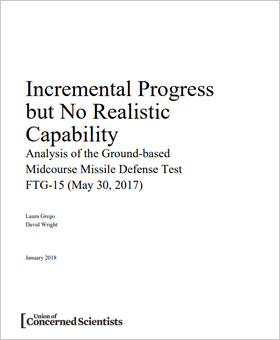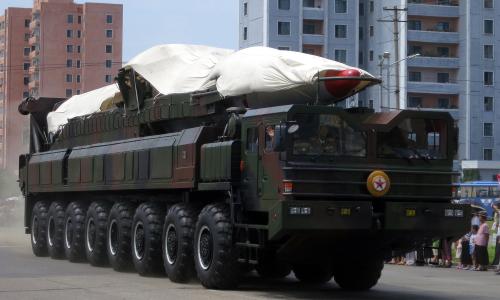May 30, 2017, marked the first intercept test in nearly three years for the Ground-based Midcourse Defense (GMD) system, the missile defense system intended to protect the United States from intercontinental ballistic missiles. The test, designated FTG-15, was declared successful, bringing the GMD’s intercept test record to four successes in ten attempts since 2004.
In testimony to the House of Representatives a week after the test, the Missile Defense Agency’s director claimed: “The scenario that we conducted was actually an exact replica of the scenario that this country would face if North Korea were to fire a ballistic missile against the United States.”
The Union of Concerned Scientists analyzed the credibility of this and other claims, using publicly available information on the missile, interceptor, and test conditions. We found that the scenario the test seems to represent—an attack on targets in Alaska—is an unlikely one. The test also appears to have been simplified in important ways that enhanced its chance of success, failing to challenge the system in a realistic way.




